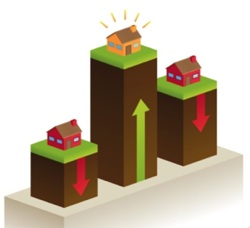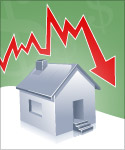 It took the Wall Street Journal an entire survey to prove what readers of this column have known for months: The housing recovery, as it plays out, will be a localized event, varying greatly city to city, neighborhood to neighborhood, street to street.
It took the Wall Street Journal an entire survey to prove what readers of this column have known for months: The housing recovery, as it plays out, will be a localized event, varying greatly city to city, neighborhood to neighborhood, street to street.
The Journal, god bless them, compiled housing data to compare inventory changes, months supply, price drops, unemployment, and default rates across 28 US metro areas. Unsurprisingly, bubble markets like Las Vegas, Phoenix, and Miami look particularly horrid, whereas areas like Dallas (which avoided much of the housing mania) and cities like Charlotte and Seattle (which are just now seeing price declines accelerate) appear to be holding up rather nicely.
But drilling deeper into the raw data reveals a housing market that's deeply bifurcated, even within individual cities.
As low-end markets experience a sharp increase in buying activity due to supply shortages and vastly lower prices, illiquid high end markets are experiencing violent price swings — typically in the southward direction. This much is already known, and the Journal's study simply shows what we're told ad nauseam: real estate is, in fact, local.
What's far more applicable to home buyers and sellers around the country, however, isn't what a few broad (yet important) data points show about what's happening in a few hundred neighborhoods all lumped together. Instead, it's where individual submarkets are headed. After all, owning a home is an investment in a neighborhood, a street, a community — not necessarily a metropolitan area at large.
Housing prices, by extension — when measured as broadly as a metro area — are basically meaningless.
 Real estate has been regarded as one of the safest investments for quite some time. However, despite the relative safety of
Real estate has been regarded as one of the safest investments for quite some time. However, despite the relative safety of  In some of the worst housing markets in the country, deflation has reached double-digit proportions. While housing woes have spread around the country, California appears to be poised to rank among the worse. One of the primary reasons for this is the fact that in the last few quarters California has experienced the largest rate of deflating home prices. In fact, home prices in California have fallen to levels that have been unprecedented.
In some of the worst housing markets in the country, deflation has reached double-digit proportions. While housing woes have spread around the country, California appears to be poised to rank among the worse. One of the primary reasons for this is the fact that in the last few quarters California has experienced the largest rate of deflating home prices. In fact, home prices in California have fallen to levels that have been unprecedented.
